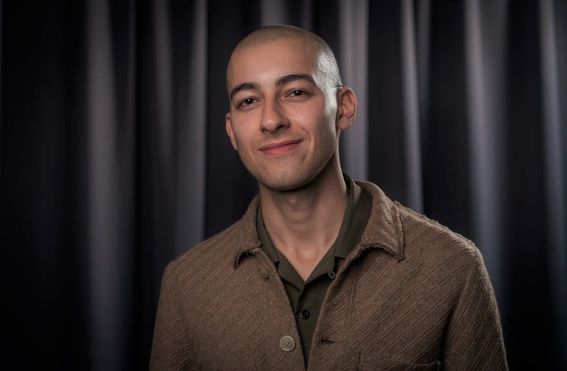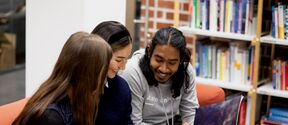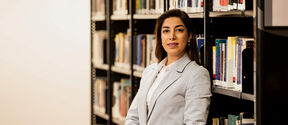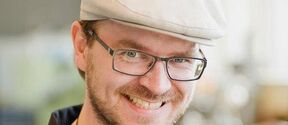Creative Sustainability Thesis Works
Creative Sustainability Thesis Works

My name is André Helgestad, I moved back to Oslo from Helsinki at the beginning of 2022 and graduated at the end of that year. I was a student representative for Creative Sustainability (CS) design - the only program I applied for after leaving my Economics degree. My professional background is a mix of environmental NGO work, municipal politics, project work at an innovation agency and strategic design in Oslo municipality.
A group of agroecology students at my home university (Abel, Idil, and Tony) created this student-run course called “Design for society” that was based on Design for Government - that was my first introduction to systemic design and the Creative Sustainability program. I was hooked on the approach and left my ongoing Economics master’s to use design methods to transition cities and places towards more circular economies. Initially, the business line was my goal - but after failing the GMAT requirements (the standardized test industry is awful) my only option was applying through the design department. That was probably one of the best decisions of my life, the types of roles I can now assume has widened considerably.
Right now, there are several projects in motion; as I work as a strategic designer in Oslo municipality. Some of my current projects include co-creating a concept for the future borough (using design methods to transform the physical workplace ++) and developing a testing structure with librarians for a community library (a test through the urban regeneration program to define local needs for a library including municipal workers). The one most close to heart is how Oslo can develop an infrastructure for a more participatory democracy through piloting and developing a municipal Decidim-platform. “Participation” is as tough as “sustainability”, everyone has some responsibility yet nobody is responsible.
My favorite part is the very start before we’ve even conceived the problematique where assumptions roam and there is no frame - also at the very end where it is about the practical doing and action. I’m all about making sure it is the - right - things we are looking at and that the final output reflects that.
I do not know yet, probably that you should just do your job as if you were in the future. An example was that my team in “Innovation and service development” had a session where we redefined our goals and purpose within our context and made a taxonomy of project types we would accept to steer our future portfolio (we kind of work as internal consultants).
Cooking meals that are extra on weekdays with my boyfriend. Hanging out with my friends, walking around town and acting spontaneously on what happens. Have conversations with people I disagree with.
CS definitely made me more critical, I question everything all the time, but I’ve also learned how to take those questions further and provide some tangible answers or ways to reach possible answers - otherwise I would probably just be extremely annoying. More than ever, I try to display my thinking openly to allow scrutiny and transparent communication; I’ve found that you connect more deeply with people that way, and if you want change to happen, people need to trust you.
André Helgestad, Creative Sustainability alumnusYou should just do your job as if you were in the future.
I cannot narrow it down to a single experience, but the frequent experience of being one of the few in a room with this unique set of competencies; which constantly snowballs me into interesting processes.
I like to think that I work in the future today, prefiguring more just and equitable ways of developing our cities and places for people and other species. On a more serious note I’d like to be involved in developing new institutions and enabling systems to ensure that thriving places become a certainty.
I think the concept of entropy, the randomness of a system, is crucial. Especially to understand that nothing is infinite and any work process, like recycling, suffers from energy loss; a circular economy can never become 100% circular due to entropy. Also entropy can be used as a hard science translator of design principles such as “close proximity” - local energy production suffers less energy loss than long cables from central production facilities.
There are pragmatic reasons for this answer. First, because neoclassical economists do not understand entropy (that is why they believe the economy can grow infinitely, as opposed to ecological economists who integrate the concept), and because it is physics, a hard science, they respect it. Also because engineers understand it, thus your explanations or reasonings are accepted. These two are the most difficult to sway from their disciplinary thinking, frequently resist other ways of knowing and tend to end up in important positions in society.
“The Dawn of Everything” by David Graeber and David Wengrow - this book will help you challenge the myths and assumptions about previous civilizations and ways of living that can liberate your thinking on what is possible to achieve; also to debunk false narratives of history as a linear one way process from “hunter gatherers” to cities. (“Designs for the Pluriverse” by Arturo Escobar is a good complementary book for this)
“Staying with the Trouble” by Donna Haraway - you will seldom be as challenged as this. This book is a journey into radically different futures, and you will start to notice her influence every time you hear the word “multispecies”.
“How to thrive in the next economy” by John Thackara - one of the books I most frequently open, many real life examples of alternative systems of meeting human needs and a easy to grasp critique of current unsustainable systems divided into sections like “clothing”, “feeding”, “moving” and “caring”.
To current students:
Take teamwork-based courses in other faculties to disrupt business as usual and to recognize and understand your value in a team. It is also a great way to learn how to use and introduce interdisciplinary concepts in practical settings for mutual benefits.
To those interested:
Just apply and find a way to fit in - for the next twenty years, people are going to talk, care, and pretend to know about what you will understand and be able to act on!
Find out more about studies in Creative Sustainability

Creative Sustainability Thesis Works

Creative Sustainability (CS) is a joint Master's degree programme at the School of Arts, Design and Architecture, School of Business and School of Chemical Engineering. Established in 2010, the CS programme brings students from a variety of fields together, to study and work in multidisciplinary teams and create novel sustainable solutions for human, urban, industrial and business environments. The pedagogical approach is based on integrating teaching and research, problem-based learning, design thinking, blended learning and strong connections to practical outcomes. The graduates of the programme have the endeavour to understand and address systemic phenomena and wicked problems.



